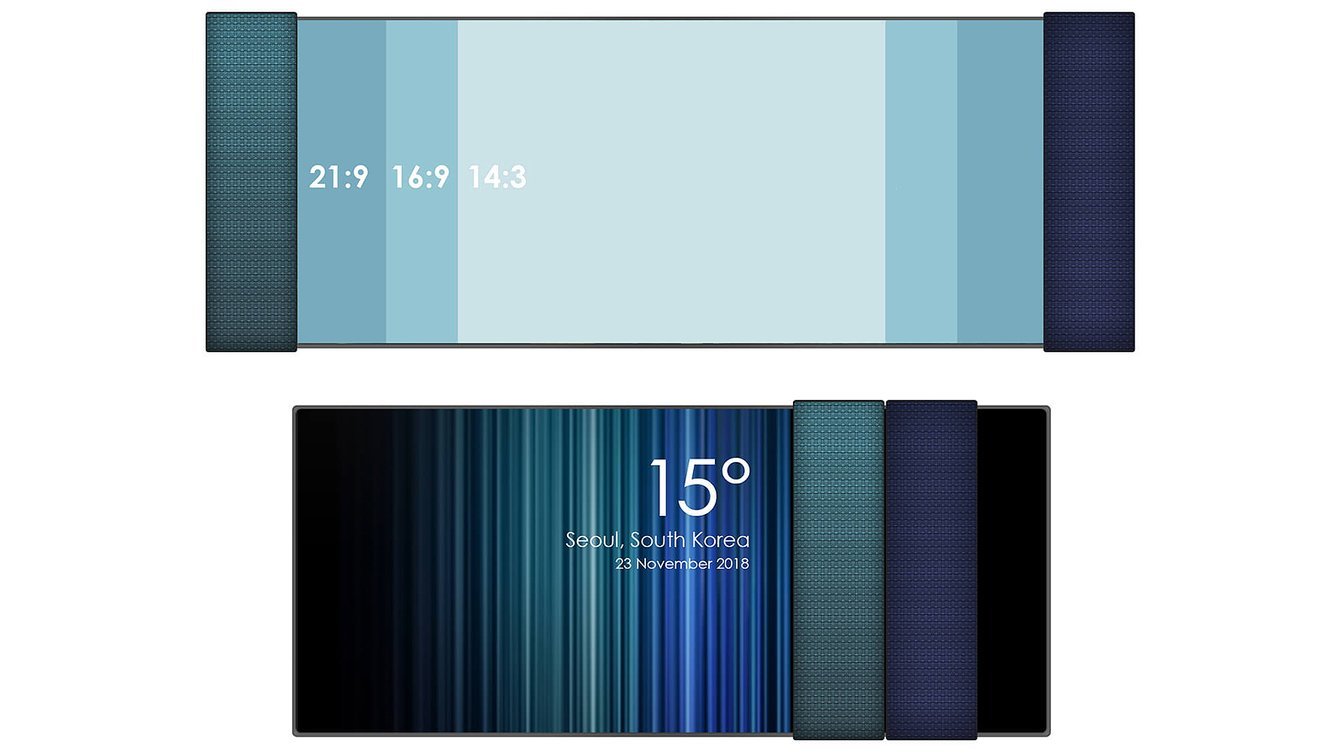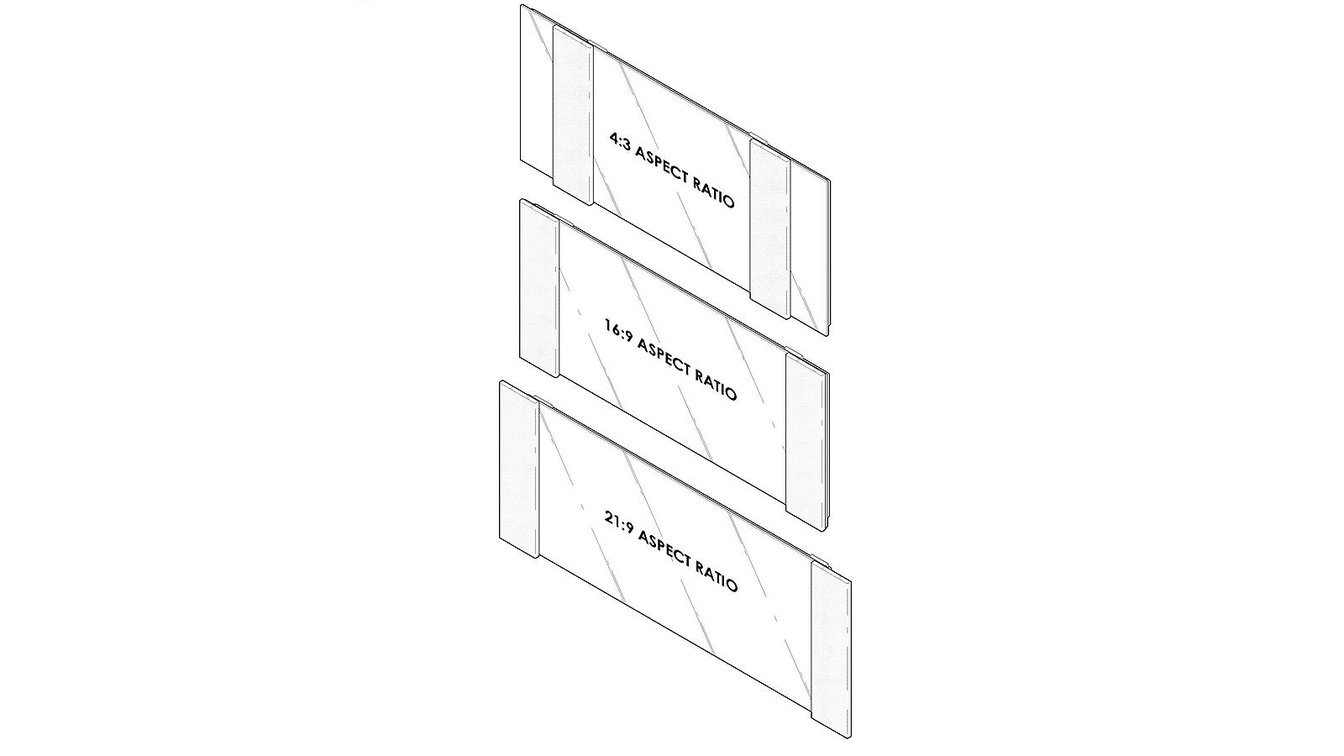LG is said to be developing a new concept for a TV that features moving speakers which can adjust themselves according to the aspect ratio being used.

The moving speaker design is detailed in a patent application made by LG Electronics, which was first spotted by the German language publication LetsGoDigital earlier this month.
The idea is to eliminate the “black bars” that appear on the sides of the TV display when watching a movie in an aspect ratio that’s different from the usual 21:9.
The 21:9 aspect ratio is the most common format today, used by most modern Hollywood movies for example. It’s a widescreen format that often leaves unused black bars at the top and bottom of the screen. 16:9 is a narrower format that typically fills the entire screen, while 4:3 is used by older CRT TVs and was commonly used by content producers back in the 1980s. When the 4:3 aspect ratio is used on modern TVs, it results in black bars on the left and right sides of the screen.
LG’s moving speaker TV concept does away with these black bars in all aspect ratios, however. The patent application details a TV with two speakers on the sides that are able to move left or right, according to the aspect ratio of the content being played.
When watching a movie in 21:9, the speakers are positioned at the very edge of the TV. When using 16:9, the speakers glide inwards a little to frame the picture perfectly. And when you choose to watch something in 4:3, they’ll glide inwards even more, though the TV begins to look a little weird at this point with 'dead' parts of the screen sticking out beyond the speakers at either end.

The speakers are said to be able to adjust themselves automatically for the correct aspect ratio, as the TV can detect the type of content being watched.
LetsGoDigital speculates the TV could make its debut as early as next month’s Consumer Electronic Show in Las Vegas. The fact that the patent application was filed by LG Electronics rather than LG Display adds weight to this theory, as the latter company normally focuses on concept designs that are years away from mass production. LG Electronics on the other hand, is more focused on the here and now.
The application doesn’t say what kind of display the technology can be used with, but we assume it should be able to work with both LCD and OLED displays.